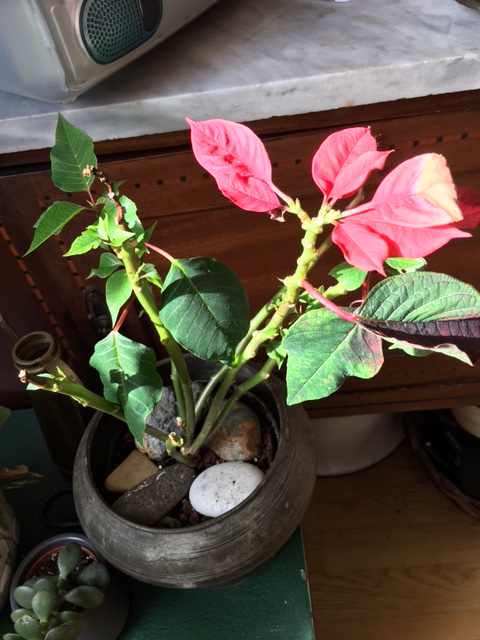
My 16 year old plastic Christmas tree
My neighbours buy ‘real’ Christmas trees while I have a fake one.
First of all, why do we have fir trees inside our houses during winter festival? It is the most illogical thing to do!
Perhaps the concept of the Christmas tree came from the Paradise Tree, representing the tree in the garden of Paradise, which was used in medieval German Mystery or Miracle Plays that were acted out in front of Churches on Christmas Eve. Fir trees were first used as Christmas trees about 1000 years ago in Northern Europe.
The first person to bring a Christmas Tree into a house, in the way we know it today, may have been the 16th century German preacher, Martin Luther. In many parts of northern Europe, cherry or hawthorn plants (or even a branch) and brought inside in the hope that they would flower at Christmas time. People also made pyramids of woods which were decorated to look like a tree with paper, apples and candles. Sometimes they were carried around from house to house, rather than being displayed in a home. Early Christmas Trees could been hung upside down from the ceiling using chains. Anyway the custom has stayed and people love the seasonal decorations and especially the children love the spectacle of the Christmas tree. So there is no getting away from not having one- what ever form you decide.
It has been calculated that artificial Christmas trees are made of plastic and PVC, shipped over from China. So there is a carbon cost of manufacture and transportation plus the energy cost of the materials. Added to that, artificial Christmas trees aren’t recyclable, so if they’re thrown away, they will end up in landfill.
According to the Carbon Trust, a two metre artificial tree has a carbon footprint of around 40kg, more than ten times that of a real tree that’s burned after Christmas. In other words, you’d need to re-use an artificial tree 10 times to negate its carbon footprint, yet it’s estimated that fake trees are used only four times, regardless of improving quality.
But if you’ve used your fake Christmas tree more for more than ten Christmases, then you are ‘carbon neutral’. I’ve used my Christmas for 16 years now, and it still looks good. All the decorations also have been used for more than 16 and also were lent to someone when they didn’t have any.
While my fake tree is stored away for the year, my neighbours have to go and buy a tree- there is car use involved while the tree itself might have been transported from Scotland or somewhere even further. Most real trees also come wrapped in plastic which also has to be disposed off. Then there is the problem of the disposal of the actual tree especially if you haven’t got the space in your garden or even a garden (which is increasingly the case in city apartments). After the new Year, the streets are blocked by irresponsible people even though the Council offers collection for a small fee. So to avoid the fee, these people throw the trees anywhere.
This is where the fake tree is better in my opinion- the more you use it, the less it costs financially as well as ecologically. It stays in its cardboard box, handy for the next time it is needed.

This is what one of my neighbours decided to do with a fake fir- looks good and deters many bugs! Better than throwing a fake tree away.
Postscript: This was published last Christmas by BBC about a boy’s ‘Worst Christmas ever’
Ros Bruce, from Essex, said her 10-year-old son got an Xbox One for Christmas, and he and a friend had spent weeks planning what games they would play together online.
She said they had been downloading a game since 09:00 GMT – and by 23:40 it was still not ready.
“He has spent most of the day in tears,” she said.
“He says it’s been his worst Christmas ever.
“I think Xbox should compensate us all.”









 Planning the inside is also an art- you don’t want it to be overcrowded but to look well managed. The plants need space to grow and breathe. So I have placed the plants well apart as the orchid was pretty big.
Planning the inside is also an art- you don’t want it to be overcrowded but to look well managed. The plants need space to grow and breathe. So I have placed the plants well apart as the orchid was pretty big.

 Merry Christmas and happy holidays!
Merry Christmas and happy holidays!





















